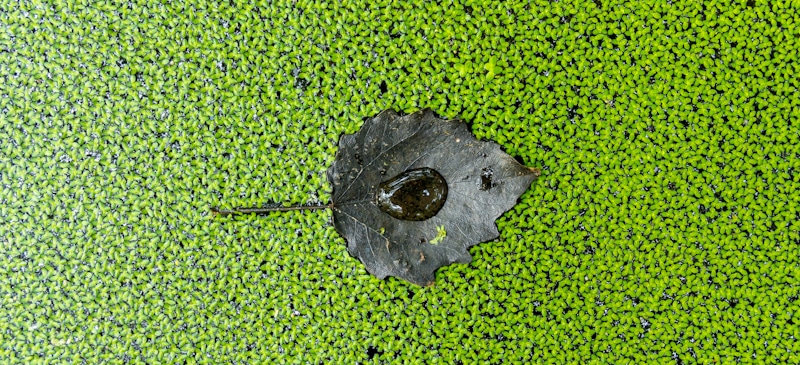According to the Biology Dictionary, a species is a group of organisms that share a genetic background. Additionally, those that can interbreed, and produce offspring that are fertile. Maybe you have the task of writing a science essay, and you have doubts when referring to the name of a species. Should you capitalize it? Should you not? This article will explore if it is necessary and the proper occasions if needed.
Scientists have agreed upon binomial names to identify characteristics of specific living groups without causing confusion. When writing about species in their scientific name, the genus will always have the first letter capitalized, but the species name will be in lowercase letters.
However, when writing informal documents, such as casual emails, letters to a known person or a friend, language non-technical essays, or narrating a written story that would confuse if using scientific names, you should limit yourself to using common words. By doing this, the writer will appear considerate towards possible readers, and there will be less confusion with the idea wanting to be transmitted. There have been updates concerning binomial nomenclature (scientific names for living things). These changes in time have been made by consensus, and they should always be. Because in research, it is necessary to have a standard for reference, not dependent on preferences, culture, or epochs.
Species When Writing
Just like a consensus is needed to settle scientific names, an agreement is also necessary for any possible updates in these terminologies. Carl Linnaeus is the one responsible for this modern way of naming organisms in the 1700s.
The benefit of operating with a concept agreement in scientific topics is that publishing research is a much easier task – as naming doesn’t depend on culture, periods, or preferences. The reason for term changes is because some words have become obsolete and require updated wording to facilitate any writing process.
Capitalizing Names of Species
In formal writing, when referring to species names, it is best to follow its general rule: capitalizing the first letter of the gene, then writing the species in lowercase. Something else to be noted is that they must be written in italic letters. Understanding the proper way of doing things will portray your essay with good technical grammar, and your readers will therefore understand this rule when they read your examples.
All living things belong to a kingdom and a species group – plants, animals, and human beings. Whenever discoveries are made, it is best to leave out daily used words because they decrease formality. If it is a research document, it will show ignorance about the proper way of writing the names of species. Other professionals in the work area could even doubt your aptitude as a qualified researcher or scientist, reducing your credibility as a professional.
However, in more relaxed contexts like language essays, letters to close people, or informal “catch up” emails, one doesn’t need to include scientific names of species but rather the common terminology for daily usage.
Examples
- Carrot – Daucas carote
- Rose – Rosa
- Fox – Cannis vulpes
- Apple – Malus domestica
- Bear – Ursidae
- Ant – Formicidae
- Ginger – Asarum
- Pineapple – Ananas comosus
- Potato – Solanum tuberosum
- Onion – Allium cepa
- Peacock – Pavo cristatus
- Lion – Panthera leo
- Orange – Citrus aurantium
- Bat – Chiroptera
- Housefly – Musca domestica
- Spinach – Spinacea oleracea
- Panther – Panthera pardus
- Mango – Mangifera indica
- Honey Bee – Apis
- Rat – Rodentia
When To Capitalize?
Binomial nomenclature has been a great help as time passes since there are no problems concerning likes or dislikes (subjectivity), seasons, or fashions. It serves as a standard for the appearance of species names within science papers, homework, and essays.
“Nature does not proceed by leaps and bounds.” – Carl Linnaeus.
Carl Linnaeus was a botanist, zoologist, and physician.
Scientific names sometimes include a person’s name or location, so they are also uppercased. Official names of species should always be in capital letters unless you’re writing about the common name, generic to all languages – like rose, spinach, pineapple, dog, cat, giraffe, or polar bear.
For example:
- Felis catus (cat)
- Prunus Avium (cherry)
- Theobroma cacao (cacao)
- Canis Lupus (dog)
- Ficus Lirata (fiddle-leaf fig tree)
- Camelus Bactrianuns (camel)
- Anchatina (snail)
- Gallus Gallus (chicken)
Species Names Used In Sentences
- India is known for being among the first countries that produce Magnifera indica, commonly known as mango.
- My grandma’s favorite fruit is the famous Malus domestica. She makes an award-winning pie, although she refuses to share her recipe with me.
- Vanessa said that the station over there has 2 x 1 in Citrus limonium water. I will buy it in bulk as I drink it all day for its slimming effects.
- Rosa is a flower that originated in Asia. Although today we have many hybridized species, the original is still the most beautiful.
- My dad is undoubtedly afraid of any Periplaneta americana. My mom calls him a coward every time she has to get rid of one.
- Last Saturday, at the aquarium, we saw a variety of Crocodilia niloticus. We thought they were breathtakingly beautiful.
- There’s a cartoon character known for its pink color. It is a Panthera pardus.
- You’re right; we humans belong to the species Homo sapiens.
- In mountainous regions like South Dakota, Washington, and Colorado, you could find Capra hircus.
- Summer is the best time to eat Carica papaya. I believe this recommendation is due to its refreshing qualities.
- Apis is a species that seems to have its origins in Euroasia.
- Oryza sativa is an ever-present ingredient in sushi, risotto, and paella, and for a good reason.
- Also known as the “king of the jungle,” Panthera leo has been a protagonist in kids’ movies.
- Asarum tea has been my mom’s favorite for three months now. We have definitely seen the benefits of it on her bronchial spasms.
- Are you having mashed Solanum tuberosum? Don’t laugh; I’m serious!
- Over the past year and a half, my doctor has recommended ingesting Daucas carote for better eyesight. I’m just not sure I can get accustomed to the taste.
- Rather a cocky animal, I consider Pavo cristatus to be an elegant, colorful, unique creature.
- I love to add Spinacea oleracea to pasta. Aside from taste, I love how it is an excellent source of both magnesium and potassium.
- My father really should consider stopping smoking. The scientific name for this popular habit is called Nicotina tobaccum.
- A delightful juice indigenous to tropical Africa is the Tamarindus indica juice. Both locals and tourists in the area love it.
Conclusion
In conclusion, writing the names of species within scientific papers, like research and official essays, should always have the genus (first name) capitalized, while the species (second name) in lowercase.
Using binomial nomenclature – choosing the discovery name when writing formal documents avoids confusion in scientific contexts. It keeps formality and leaves out common words. One must write species names in italics if printed. On the other hand, if handwritten, one must underline them. Some species even include a person’s name or location. In these cases, the genus should also be in capital letters. A species is a group of organisms that share a genetic background, can interbreed, and produce offspring that are also fertile. The reason for this is to facilitate the classification process and to expand discoveries within a specific group.
Finally, when writing informal written works, there is no need to write specific species scientific names unless the purpose of the assignment requires it. One must take into account the readers. We should ask ourselves, who will read this work? Defining the level of formality is also necessary. That way, the terminologies used will be understandable and accessible to the reading audience.
Shawn Manaher is the founder and CEO of The Content Authority. He’s one part content manager, one part writing ninja organizer, and two parts leader of top content creators. You don’t even want to know what he calls pancakes.



